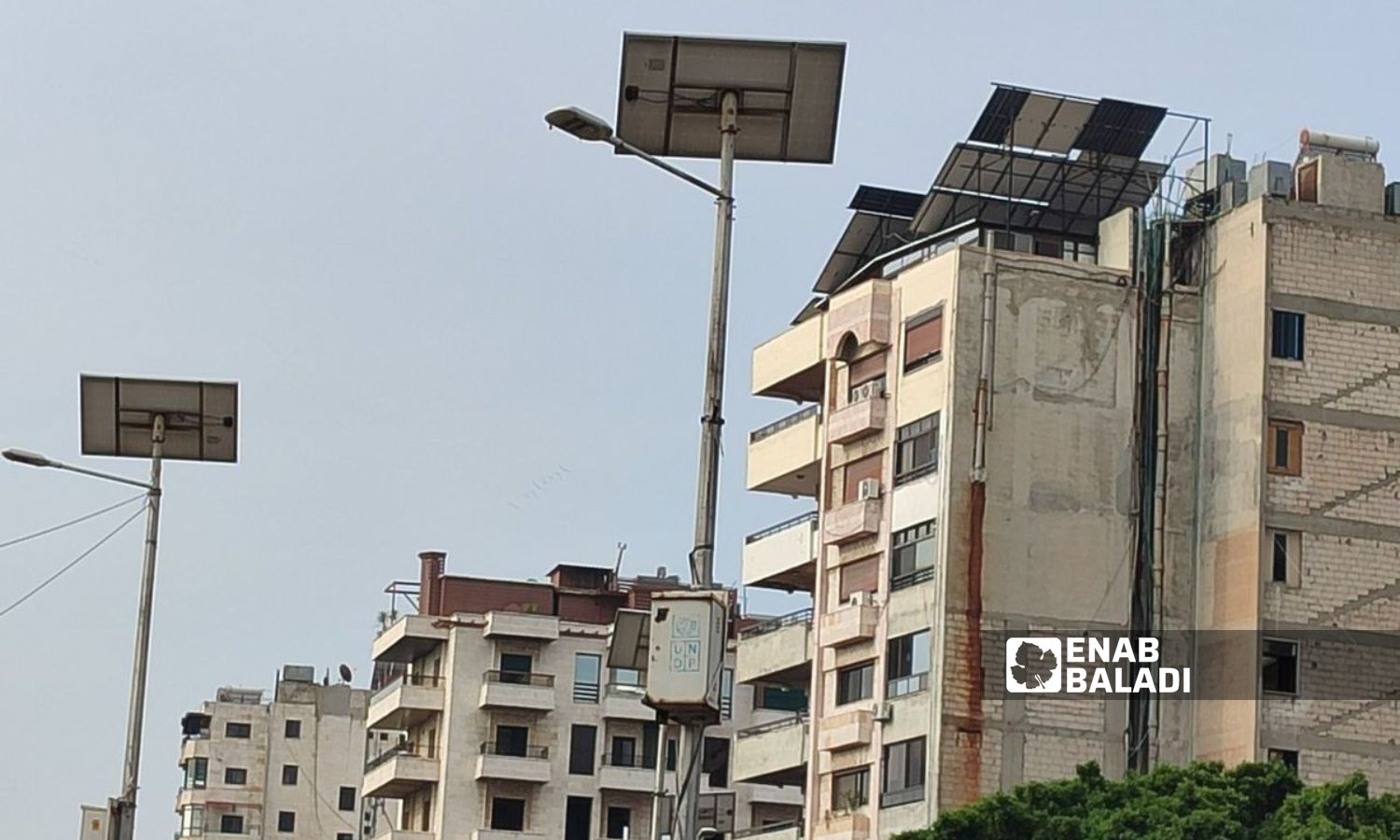



Latakia – Linda Ali
Hannadi (48 years old), a public sector employee, sarcastically dismissed the idea of obtaining a solar power system costing millions of pounds, at a time when she and her husband struggle to secure the bare minimum of food costs for their family of three children, the oldest being 16 years old.
The lady, who lives in al-Da’tour, one of the informal areas of Latakia city, said that the spread of renewable energy systems in society is exclusive to some relatives of expatriates or families of influential figures and traders.
Hannadi views solar panels as a new way to reinforce class division in Syrian society, where those with money can get food, electricity, and entertainment, and those without money cannot dream of more than food.
The discussion about solar energy as a source of electricity in Syria renews with the arrival of summer due to the need for it to run a fan, a small refrigerator, or at least ensure cold water, especially with the increase in electricity rationing hours.
There is no fixed timing for rationing in Syria; a month ago, electricity was available for an hour every five hours of outages, then it became half an hour every five and a half hours of outages, a period insufficient to charge a battery, cool water, or heat it.
Abdullah (39 years old), an employee in a private factory in the province, said he thought about getting a solar energy loan with a ceiling of 35 million Syrian pounds. When he asked for details, he discovered that he would pay 300,000 pounds monthly as an installment for the interest-free government loan, which equals half of his salary, so he gave up the idea that had teased his dreams of finally getting electricity.
Iyad (56 years old), a government employee, said he was unconvinced of the benefit of solar energy, so even if he had enough money, he wouldn’t install it.
He added that the cost doesn’t just include installation fees and purchasing panels, but also includes replacing the battery every year or two at a considerable amount exceeding millions of pounds. He questioned whether he would get a loan every time he needed to install a new battery.
He considered that he could buy diesel at the unsubsidized price and a large-capacity generator with a silencer to run electricity in the house for much less than the cost of solar energy.
He continued that the reason some people are keen on getting solar energy is due to increased advertising campaigns promoted by the government, as a result of its inability to provide electricity to people. And indeed, only “one big influential figure” benefits from it.
The government grants an interest-free solar energy loan of 35 million pounds for home energy, an amount somewhat close to the actual cost.
In one solar system center in Latakia, an engineer inquired about the cost of installing a solar energy system, which ranges between 30 million and 70 million pounds, depending on the need and consumer desire.
To run a refrigerator, washing machine (cold cycle) in the morning, fans, lighting, and charging, a person needs solar energy costing about 30 million Syrian pounds. But if the goal is to run the entire house including an air conditioner day and night, the cost reaches 70 million pounds, varying according to the exchange rate of the pound against the dollar (14,850 pounds per dollar).
Regarding batteries, consumers have two options. The first is two tubular batteries suitable for operation, priced at 4.5 million pounds each and needing replacement every two years at the latest, i.e., nine million pounds every two years.
The other option is to install a lithium battery priced between 14 and 19 million pounds, needing replacement every 4 to 6 years depending on operation and consumption.
Therefore, low-income earners and employees cannot bear the high costs of maintaining solar energy systems in their homes. Most of them obtained the 35 million-pound loan but do not have the financial means to later buy tubular or lithium batteries.
According to the engineer, the cost of installing solar energy systems is expected to increase after a recent decision to impose a tax of $25 on each imported solar panel. The minimum number of panels required for installation is four panels, costing $100, which the citizen, not the importer, will bear.
Many services are linked to electricity, such as communications, which disappear with power outages, especially at night, in addition to disrupting the work of some government institutions during rationing times, with the difficulties students face in studying at night.
The minimum governmental salar in regime-controlled areas is about 279 thousand pounds, while the average cost of living for a Syrian family of five members has reached about 12.5 million Syrian pounds per month, with a minimum of 7.8 million Syrian pounds.
if you think the article contain wrong information or you have additional details Send Correction